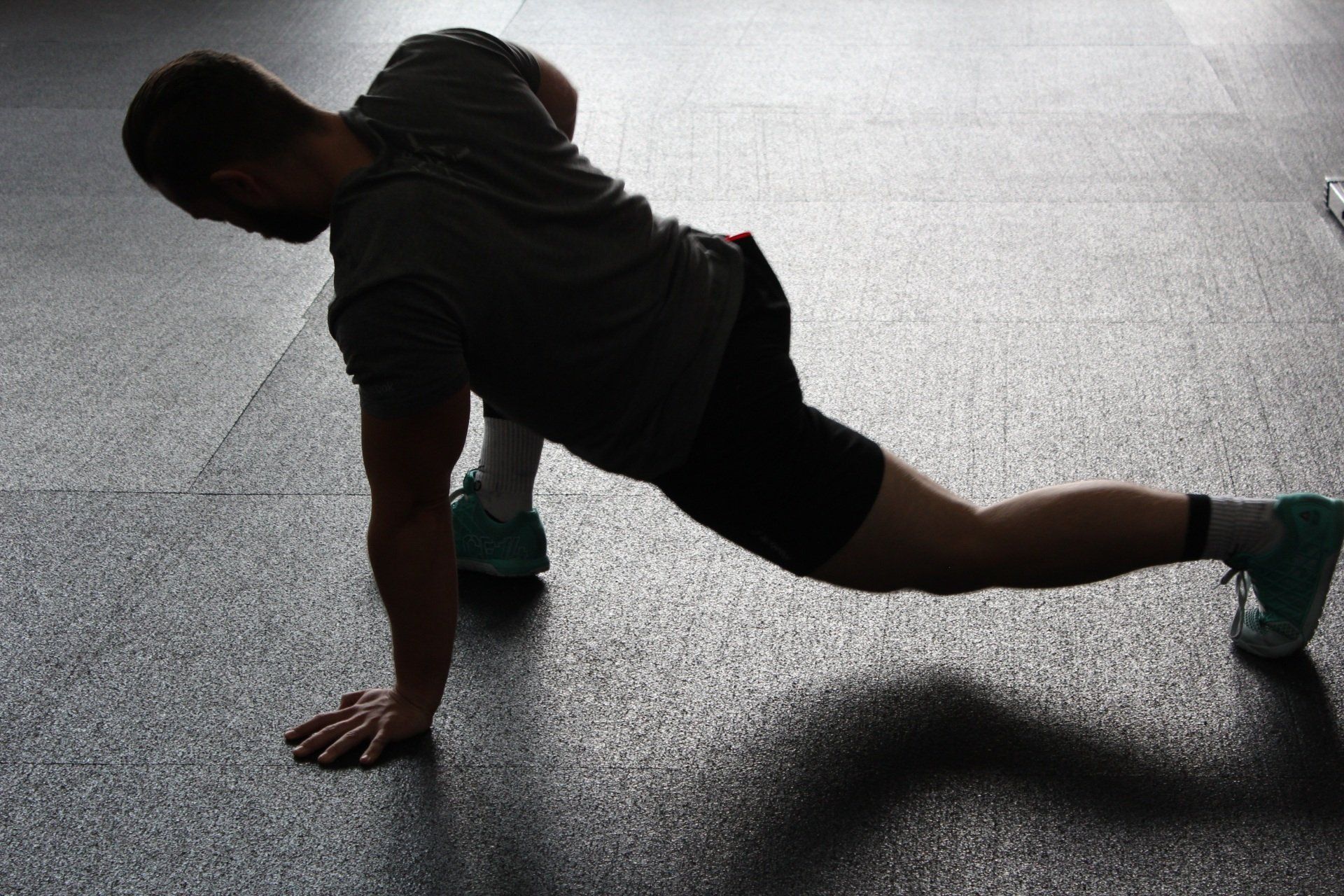They don’t all yell at you till you’re in a sweaty heap.
Sally Tamarkin
BuzzFeed Staff
posted on May 6, 2016, at 12:05 p.m.
BuzzFeed Health spoke with three personal trainers who all work one-on-one with clients: Kelvin Gary, owner of Body Space Fitness , tran.com/”>Jason Tran , personal trainer and instructor at SWERVE Fitness , and >Lauren Williams , head coach at Tone House. Here’s what they really want you to know about personal training:
1. Their job isn’t to get you major results in a super short period of time.
“People still show up and expect to be handed results and don’t fully realize the amount of work that needs to go into those results,” says Gary. So, no, they probably won’t make you drop a few sizes in a week.
If you want to make major changes to how you look or perform, it can take weeks or months months of hard work and maybe even significant lifestyle changes, depending on how drastic the results are that you’re after.
2. They struggle with workout motivation, too.

Instagram: @demi____anne
/ Via instagram.com
Sure, many people become trainers because they are interested in fitness and love working out. But that doesn’t mean they’re always in the mood to exercise or that they never dread a workout.
“I don’t always wake up and think ‘Ten miles! I’m going for it today!’” says Williams. But that also makes her a better trainer because it helps her relate to her clients who also struggle with staying on track.
3. They’re probably going to ask about your diet.
If your goal is to lose fat or gain muscle, the way you eat has a huge impact on reaching your goals — no matter how much you’re sticking to your workout plan. So, don’t be surprised when they ask all about your diet and even request a food log.
4. But they won’t judge you for whatever you ate and drank last weekend (though they will hold you accountable).
Trainers do want to know about your boozy brunches and pizza benders, but not because they want to make you feel bad about them. Rather, they want to know about your life outside of training so they can understand why you might not be reaching your goals. And they want to help keep you accountable to the goals you set.
“I never want people to feel bad. I want them to feel empowered. But you do have to be honest because at some point they might start blaming you for not getting the results they want,” says Williams.
5. When it comes to weight loss, losing about a pound a week is actually considered really good progress for most people.
Of course every body is different and a multitude of factors come into play when it comes to weight loss, but Gary says that many clients are surprised to learn what’s realistic when it comes to weight loss expectation. Sure, there are all kinds of extreme diets and detoxes that promise huge weekly weight losses. But when you’re going about it in a healthy and sustainable way, Gary says that for most clients seeking to lose weight, this is typically considered steady progress.
6. Contrary to popular belief, they are not making you do stuff you hate just to torture you.
We tend to love doing the stuff we’re great at and dread doing the movements that feel super difficult or awkward or make us feel weak. If you hate burpees because they’re so cardiovascularly challenging or you hate side planks because you always feel off balance, these are clues to trainers that you have a gap in your fitness that they want to address.
But a good trainer won’t make you tackle that stuff immediately. They’ll usually work on establishing trust with you and also getting you more comfortable working out so that doing something you don’t like doesn’t seem so intimidating. “Once people start working out, they view themselves differently. People start to trust themselves and their bodies and get excited about their strength and they often become ready to move onto something they thought they hated,” Williams says.
7. Most of the work they do for clients happens outside of training sessions.
All three experts talked about how much time they spend outside the gym preparing for the next session with each of their clients. This includes planning clients’ sessions for the next week, researching new exercises and workouts, creating playlists, and following up with clients to confirm sessions, says Tran.
8. And most of your results will come from what you do outside of your sessions.
Even if you work hard every time you see your trainer and are committed to the programming they’ve created for you, it’s the time between sessions that is most crucial for progress, no matter what your goals are.
“We might see the average client two hours per week. There are 168 hours in a week. The magic happens in those other 166 hours,” says Gary. Williams agrees that progress results are more impacted by rest, recovery, sleep, and nutrition, than they are by your workouts alone. So don’t be surprised if your trainer texts you throughout the week to check up on your eating, sleeping, and de-stressing habits.
9. Whether or not a trainer looks shredded has nothing to do with how skilled they are.
“I think there’s a misconception that to be a personal trainer you have to have a super ripped body and a six-pack. But you can still be super motivational and a great coach even if you don’t meet that image,” says Tran.
Get this pin for $2 on Etsy.
10. Not all trainers are all about that “go hard or go home” mentality.

Nickelodeon / Via instagram.com
“A lot of people think personal trainers are there to yell at you and make you do a lot of burpees and get a crazy burn. Traditionally you think about a trainer kicking your butt and making you sweat or lift a lot of weight,” says Williams.
And sure, some trainers might do that for some clients — if those workouts fit their goals — but working with a trainer doesn’t by default mean you’ll be doing super high-intensity workouts only or all the time. Because trainers are tailoring your programming to your goals, they’ll likely incorporate a mix of different kinds of workouts.
11. And yelling at clients isn’t actually a go-to motivational tool.

Disney / Via didyouknowmagic.tumblr.com
There are trainers who choose to employ that drill-sergeant-at-a-boot-camp style, says Williams. But a good trainer wouldn’t interact with every client the same way, because everyone responds to different kinds of motivation.
“Some of my clients love CrossFit or Tone House; they love that intensity and they might want you to bring that into their session. But maybe others want something more gentle, a softer communication style. You have to get to know them,” she says.
12. You don’t have to be 100% injury-free to work with a trainer.

Paramount Pictures / Via instagram.com
If you’ve only ever worked out by yourself or in group fitness classes you might think that being injured or having that on-again-off-again knee thing means you have to sit out of exercise completely till you’re healed. But a skilled trainer can write workouts that not only allow you to exercise without aggravating your injury, many times they can help you get stronger in ways that aid healing.
13. You don’t need to have an aesthetic goal to hire a trainer.
Sure, lots of people have goals around changing their bodies, and plenty of people are pursuing overall health and wellness, but people also see trainers to get better at something they like doing — like become a faster runner, better cyclist, or stronger swimmer, says Gary. You might even hire a trainer to get back into working out safely after an injury or a long hiatus. Basically, no interest in changing your body? No problem!
14. They can also help you get over your intimidation about working out.
Trainers don’t expect their clients to already be great at exercising or not-at-all-self-conscious about working out. In fact, part of what they can help you do is feel more comfortable with moving your body.
For instance, Williams helps people feel less awkward by starting them out with simple bodyweight moves and talking them through how their bodies should be engaged. She might ask someone to do a plank and tell them to push their hands into the floor and open their chest. This helps them connect what they’re doing to how their bodies feel, which can make them feel more comfortable and proficient using their bodies.
15. And as much as they love training you, they get super excited when you’re able to take the reins.

NBC / Via prochoiceamerica.tumblr.com
Of course any trainer’s goal is to get you the results you want. But Williams says what’s even more rewarding is when clients master what you’ve worked on with them and can maintain their own base of fitness. When this happens the trainer gets to think of new goals to pursue or “problems” to solve, which is a fun challenge.
The post 15 Surprising Insider Secrets From Personal Trainers appeared first on Body Space Fitness.





















